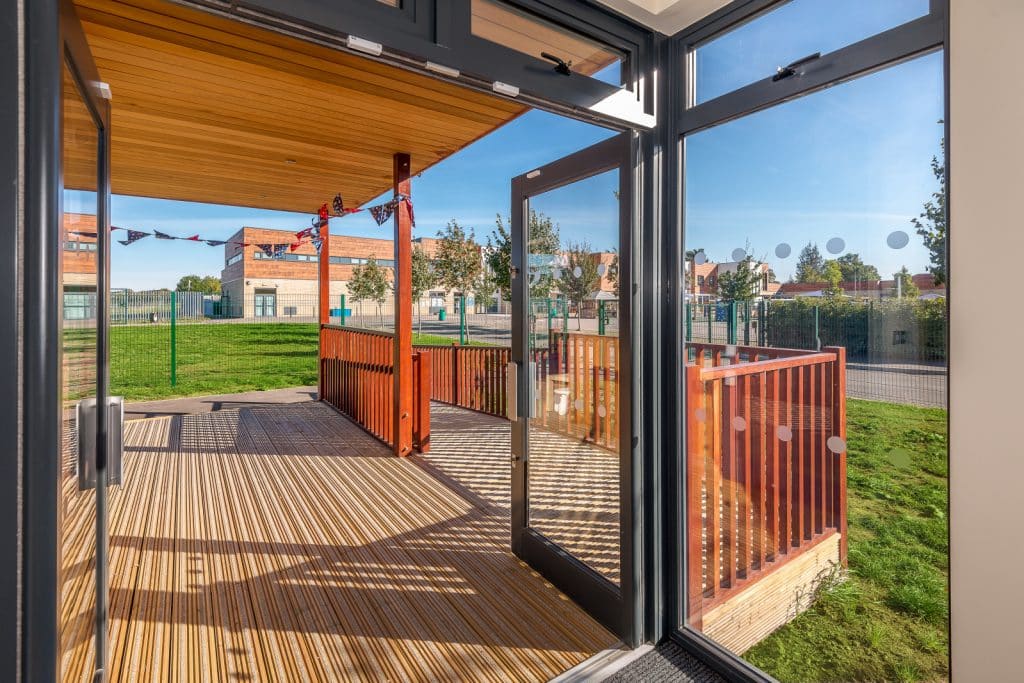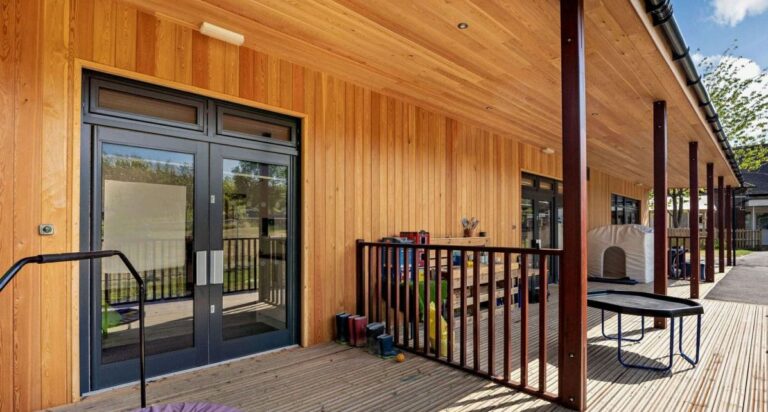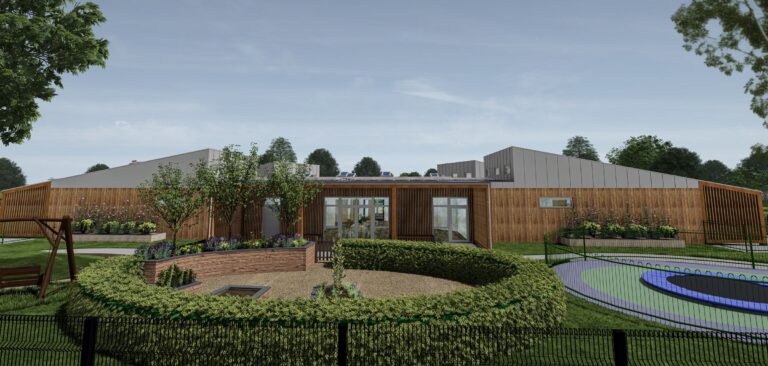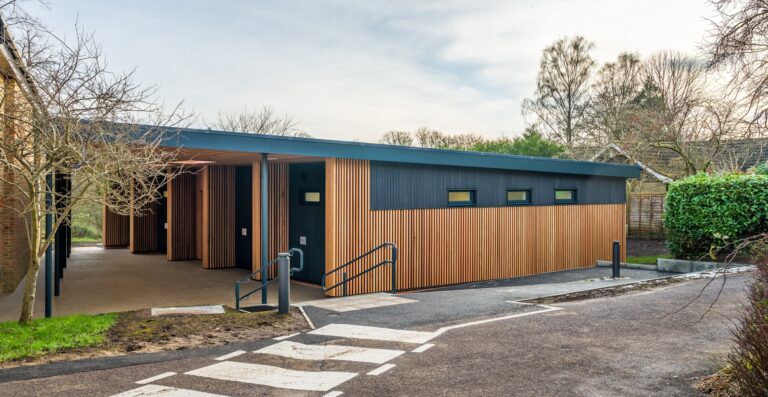“A love of life and the living world; the affinity of human beings for other life forms.”
Biophilic design is a series of principles that connect buildings to the natural world, aiming to create healthier, more pleasant interior environments for occupants, while increasing both performance and productivity. TG Escapes produces beautiful modular buildings for places like schools and leisure facilities, and our architectural team place biophilic design principles at the heart of everything we do.
In order to understand the clear benefits of biophilic design, we’re going to explore the origins of biophilia and the issues it addresses, before looking at some of the ways companies like TG Escapes can emphasise biophilic designs through their buildings.
What is the meaning of biophilia?
The phrase biophilia was first coined in the 1970s by German-born psychoanalyst and social philosopher Eric Fromm, to mean a ‘love for humanity and nature, and independence and freedom.’ In 1984, the US biologist Edward O Wilson published his work “Biophilia” in which he used the word to refer to ‘the rich natural pleasure that comes from being surrounded by living organisms.’
Wilson’s biophilia hypothesis proposed that the tendency of humans to connect and affiliate with both nature and other life forms is rooted in our genetic history, but has been eroded by industrialisation and modern urban environments.
What is nature deficit disorder?
Sterile modern interiors and fast means of transportation cocoon their users from the natural elements. More recently, the exponential advancement of the technological revolution has dramatically increased the amount of time we spend looking at screens each day, serving to further weaken the bond between humans and the natural world.
This is particularly relevant for today’s children and young people, who came of age in a world dominated by smartphones, social media, and perpetual connectivity.
A piece of work by Richard Louv, ‘The Last Child in the Woods’ (2005), defined a phrase applicable primarily to the modern child, growing up amidst the proliferation of modern technology, which he called ‘Nature Deficit Disorder.’
He uses the term to serve as a description of the human costs of divergence and alienation from the natural world. He theorised that spending less time outdoors and more time in front of a screen has had a detrimental impact on overall health and mental well-being with a corresponding negative effect on children’s behaviour and capacity for learning.
Getting back to nature through architecture
There is now a growing body of scholarly interest and architectural innovation that is involved in promoting the benefits of biophilic building design. At its core, the principle is to incorporate nature-based elements into a building’s design at every available opportunity, offering its occupants a place to truly connect with nature. This concept applies across office design, recreational buildings, and learning environments alike.
Where possible, a building should be constructed using natural materials and textures that reflect or mimic those found in the outside world, helping bring nature to interior spaces. They should maximise exposure to and penetration of natural light, and provide for a healthy level of interior air quality. Wherever possible, they should provide both views of and access to the natural world outside of the building.
Planning requirements in workplaces and schools are increasingly focused on the environment and social value. Our eco-friendly buildings come with the option of green roofs, alongside biodiversity features such as bat boxes, birdhouses, trees and wildflowers to plant. This not only re-assures the planners but engages the wider community in environmental citizenship, and adds more biophilic design elements to a project.

How the concepts of biophilic design benefit an education space
Biophilic principles can aid any interior space, which is why it has become so sought after within architecture for modern office designs, commercial spaces, and more. With specific reference to classroom design, a biophilic educational environment should seamlessly blend the work and pleasure of learning with the life-enhancing effects of the natural world.
Three of the most critical interior design elements are exposed to natural light, views of nature, and physical access to the outdoors.
Natural light
One of the best-known benefits of exposure to natural light is its proven role in stimulating serotonin production. Serotonin is vital for several physiological functions including appetite, digestion, and sleep regulation, whilst its psychological benefits are also significant.
It plays a vital role in maintaining mood balance and promoting a sense of happiness, with a demonstrable link between low levels of serotonin and depression. A biophilic building design would look to maximise natural light within interior spaces, through the use of large glass elements and features like sun pipes.
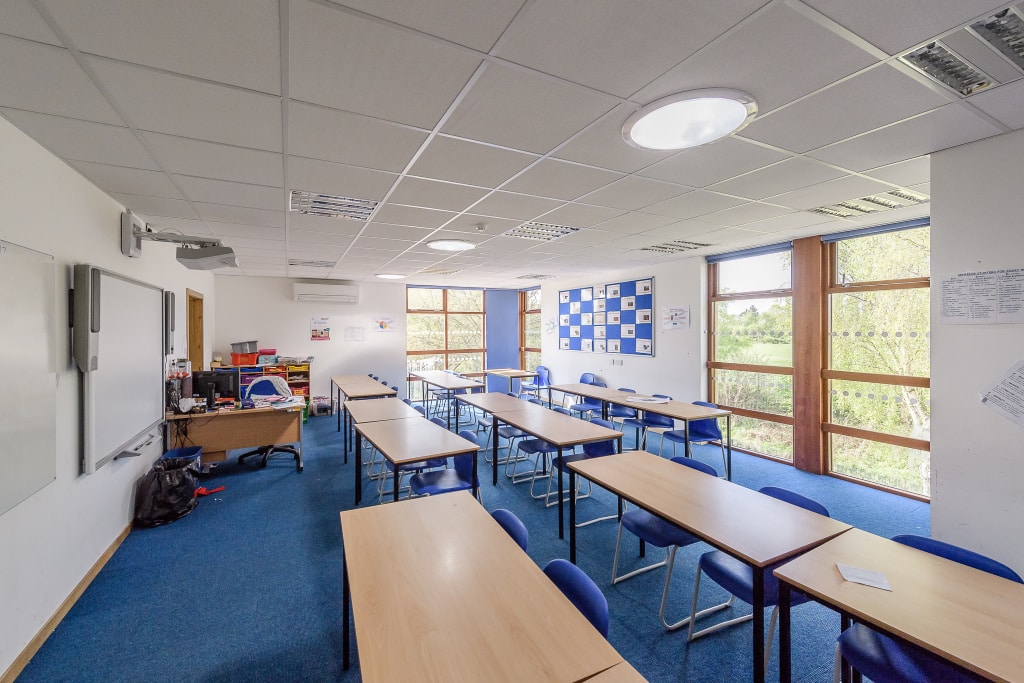
Views of nature
Views of nature are increasingly shown to be a positive antidote to chronic, low-grade stress which has been identified by the WHO as one of the two leading contributors to premature death in developed nations. The second factor is low physical activity, an inevitable by-product of modern, sedentary, often screen-based internal classroom environments. This biophilic principle can be incorporated into architectural designs, with great natural views prioritised, or the use of features like green walls. Our team works to emphasise the presence of nature in each of our buildings.
Being outdoors
A classroom design that encourages pupils to get outside into the natural environment, whether it be for play or learning opportunities, will have a beneficial impact on physical and mental health alongside socioeconomic development. Exposure to nature has been shown to improve discipline and concentration, promote risk-taking and creativity, generate a sense of freedom and adventure, and encourage positive social interaction.
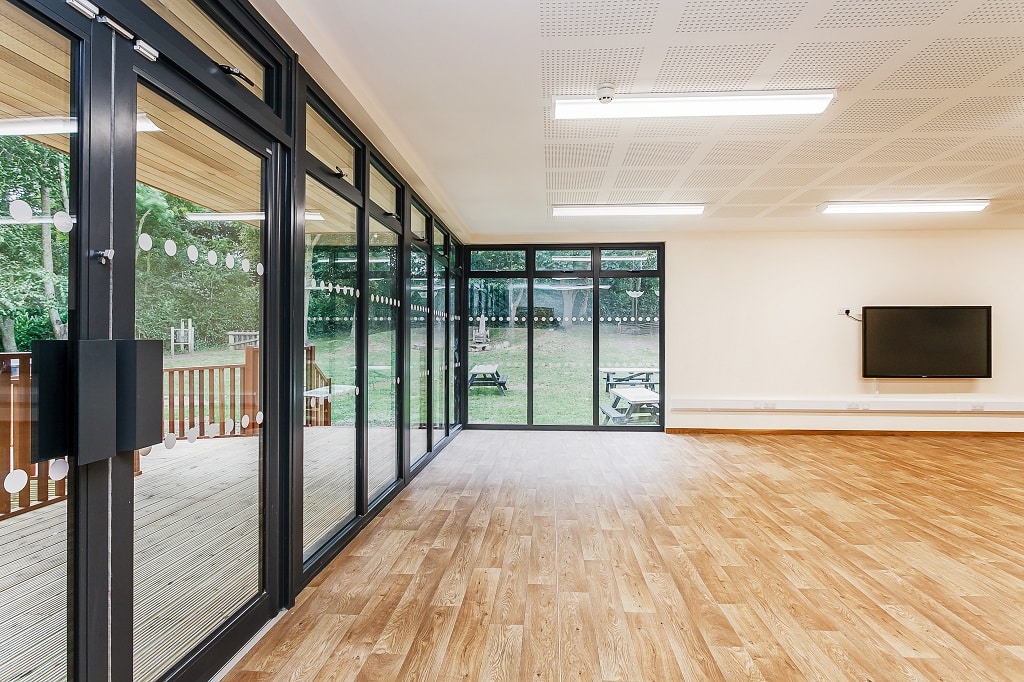
A classroom environment that has specific biophilic design features can bring significant benefits to a student’s learning experience, both in the space and indeed outside of it. Healthier, happier and more engaged children (and their teachers too) are far more likely to make the most of the educational opportunities open to them.
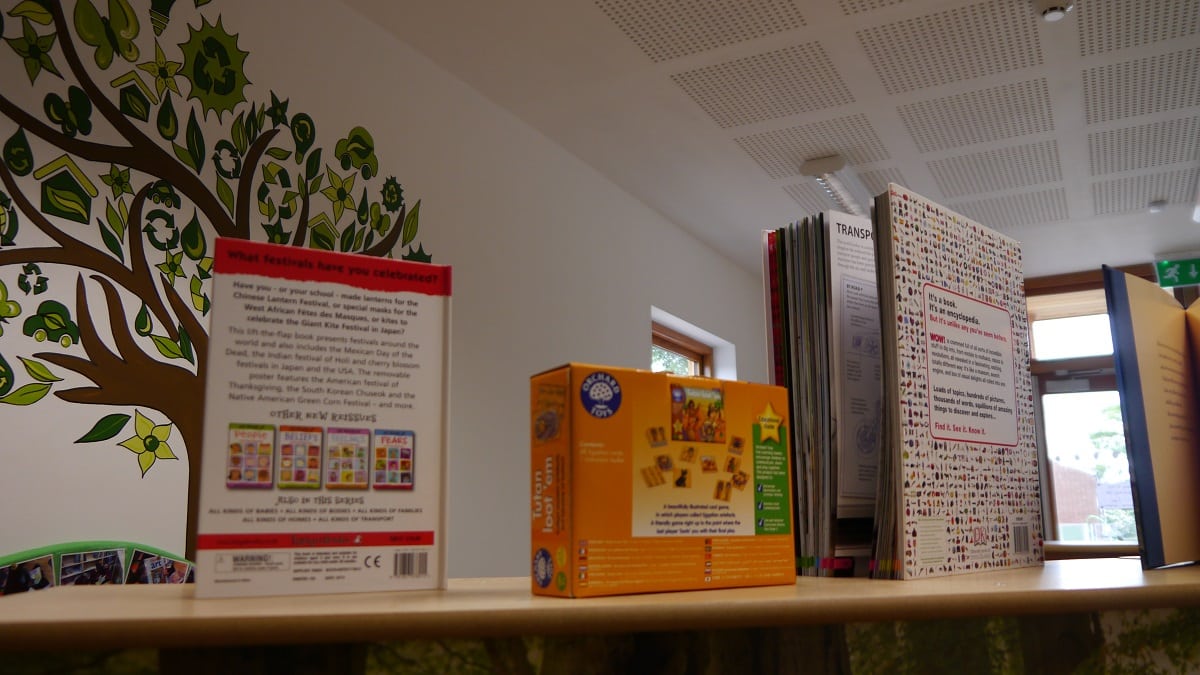
We have produced a short download explaining the principles and showing examples of Biophilic building design and how they could be incorporated into TG Escapes Learning Escapes for education. Consultancy company Terrapin Bright Green also laid out their ‘14 Patterns of Biophilic Design’ in a detailed report, which offers interesting additional reading.
TG Escapes produces beautiful timber frame modular buildings, working across the education sector and with commercial businesses. Our wholly bespoke design process allows our team of architects to make a building customised around your needs and space while prioritising biophilic design ideas and net-zero emissions.
We design, build, deliver, and install, offering a simple, professional, and friendly service to our customers. View our case studies page to see just some of the fantastic work we’ve done across the UK.

